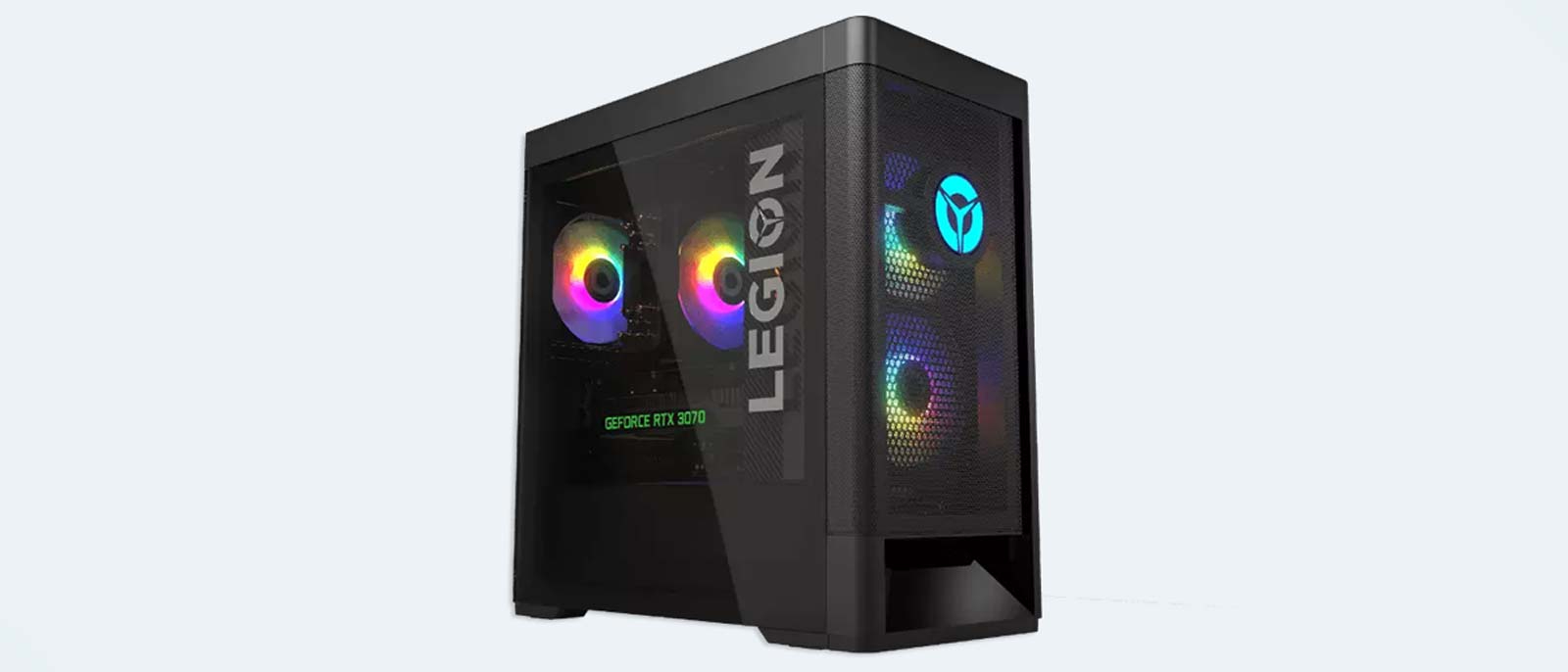Tom's Guide Verdict
The Lenovo Legion Tower 5 is an affordable, capable and upgradeable gaming PC. But it fails to stand out from the crowd.
Pros
- +
Good gaming performance at 1080p
- +
Reasonably priced
- +
Easily upgradable
Cons
- -
Some pre-installed bloatware
- -
Fewer USB ports than similar models
Why you can trust Tom's Guide
Price: $950 as reviewed
Processor: Intel Core i5-11400
RAM: 8 GB
Graphics Card: Nvidia GeForce GTX 1660 Super
Storage: 256GB SSD + 1TB HDD
Accessories: USB wired keyboard, USB wired mouse
Ports: 6x USB-A, 1x USB-C, 1x HDMI, 1x DisplayPort, Ethernet, 3.5mm audio
Size: 8.07 x 15.57 x 16.54 inches
Weight: 27 pounds
The Legion Tower 5 ($950 as reviewed, configurable up to $2,500) is Lenovo’s mid-range gaming desktop, offering solid performance without the hefty price tag of a high-end gaming rig.
After spending some time with the Legion Tower 5, I think it’s a fine addition to the ranks of pre-built gaming PCs in this price category. But I’m struggling for a reason to choose it over any of the other similar machines on the market.
But while it may not be one of the best gaming PCs you can buy, the Legion Tower 5 offers respectable performance for roughly $1,000 (and you may even be able to get it for a little less with one of our Lenovo coupon codes). It's a good reminder that you don't need to shell out thousands of dollars for a high-end rig in order to enjoy great gaming performance at 1080p.
Lenovo Legion Tower 5 review: Price and configurations
- Expect to pay between $900 - $2,500
- $950 config (reviewed) delivers solid 1080p gaming
Our Legion Tower 5 review unit is a Intel-based $950 configuration available for purchase at Best Buy. This is one of the cheapest versions of the Legion Tower 5 Lenovo has (high-end configurations top out at around $2,500), but it still has some respectable specs for the money.
It comes with an Intel Core i5-11400F 2.6 GHz processor and an Nvidia GeForce GTX 1660 Super graphics card. Neither is likely to wow your friends with a top-of-the-line gaming rig, but they deliver decent gaming performance in the Legion 5’s 1080p comfort zone. I was a bit disappointed that our review model came with only 8GB of RAM, but to be honest, I didn’t really feel the lack of RAM during testing.

Probably the most pleasant surprise is that even the cheapest Legion Tower 5 model comes with a built-in SSD. Until recently, a fair number of machines at this price, including my own home machine, made you spring for your own solid state drive. Getting one packed in with the Legion Tower 5 is a nice bonus, as the slower read speeds of an HDD cause a significant performance hit when gaming.
Lenovo Legion Tower 5 review: Design
- Spacious internal area shines thanks to RGB lighting
The Legion Tower 5 has the traditional boxy, bulky desktop silhouette. At 27 pounds, it was light enough that I had no trouble moving it around for testing, but still heavy enough that I'd rather not be moving the thing regularly.
The only details breaking up the standard black rectangle of the case are a clear glass side panel, and customizable RGB lights in both the front (displaying the Legion logo) and rear (illuminating the tower's interior) of the machine. The desktop measures 8.07 x 15.57 x 16.54 inches, which leaves a significantly spacious internal area that makes installing upgrades easier. It also gives the RGB lighting room to shine.
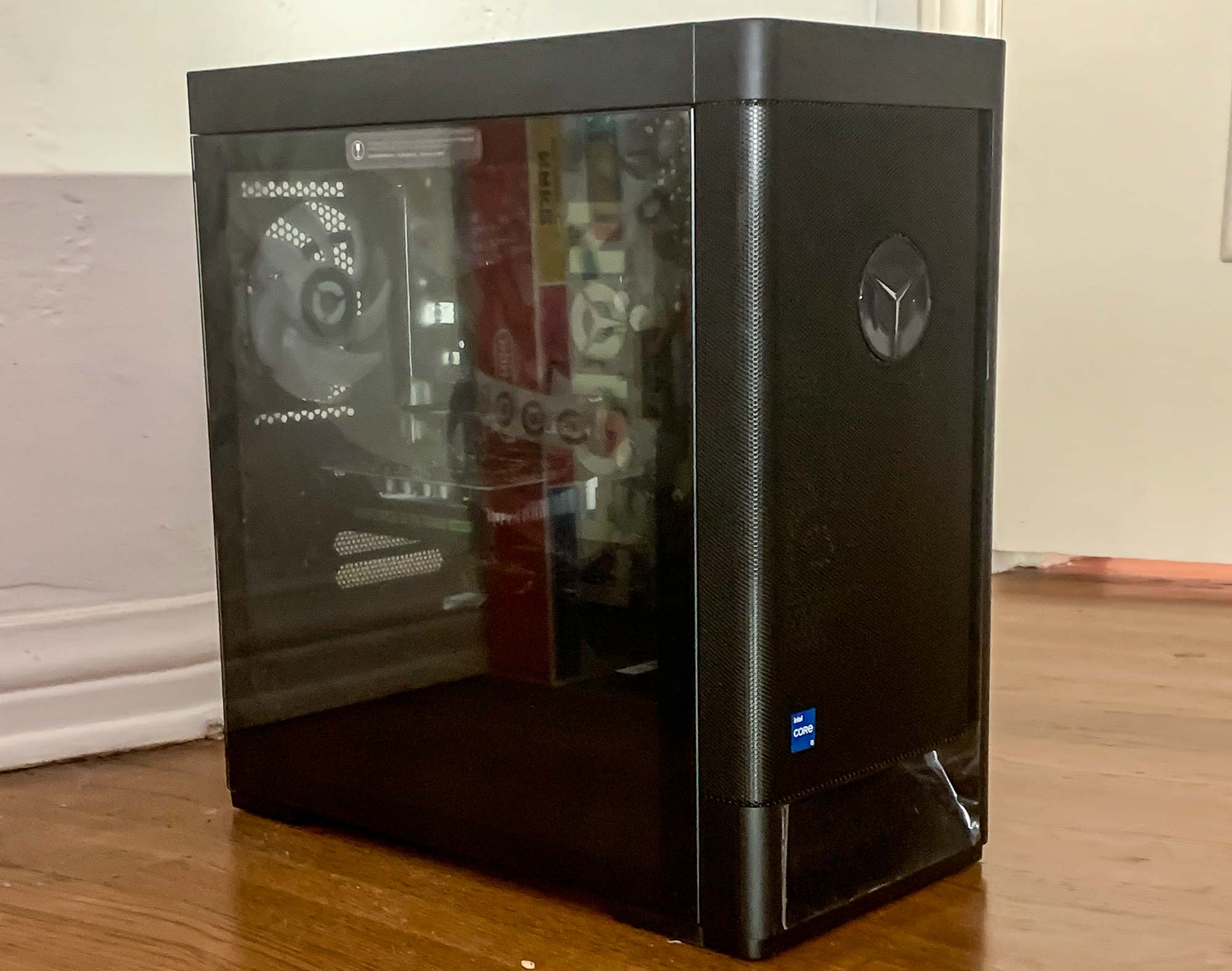
A lot of machines have started to use a "PC internals as multicolored rave room" design, including the similarly-priced Dell G5 5090. But it's still nice to see something other than a solid black case when your eyes drift over to your desktop.
Lenovo Legion Tower 5 review: Benchmarks and performance
- Runs most games well to great at 1080p
- Don't expect to play many games well at 4K
Keeping in mind the price, the Legion Tower 5 held up well during testing at 1080p. Far Cry New Dawn ran at an average of 83 frames per second, and Grand Theft Auto 5 averaged 65 fps. Newer games ran a little bit slower, as you might imagine, but no game in our battery of tests ran under 30 fps. The slowest was Red Dead Redemption 2, which achieved an average of 39 fps during testing.
Anecdotally, I saw similar results while using the Legion 5 casually for a week. If I was playing older or less graphically-intensive titles, the Legion 5 would let me crank all graphics settings up to max and still run at 60 fps or more. More recent big-budget games required some settings tweaking to run at those speeds, but they were all playable.
It was only when I tried to push the limits of what the Legion Tower 5 could do that it became obvious this isn't a high-end machine. If for some reason you want to try to use the Legion Tower 5 to run the latest games in 4K resolution, you’re probably going to have a bad time. The Legion Tower 5 managed to run Far Cry New Dawn in 4K at a surprisingly respectable 35 fps, but when playing Assassin’s Creed: Valhalla at the same resolution, it chugged along at 18 fps. Shadow of the Tomb Raider, Red Dead Redemption 2 and GTA V wouldn’t run in 4K at all.
When used for non-gaming tasks, the Legion Tower 5 also delivered respectable — if not amazing — results. It took a little over 10 minutes (10:17) to complete our video editing test, which tasks the PC with transcoding a 4K video down to 1080p in Handbrake. When we put the Legion Tower 5's SSD to the test by asking it to duplicate 25 GB of multimedia files, it managed to do so at a transfer rate of 454 MBps.
The Legion Tower 5 performed reasonably well in the Geekbench 5.4 multi-core CPU benchmarking test, earning a decent score of 6,047. That's better than the similarly-priced Dell G5 (5,558) but nowhere near the 10,000+ scores earned by high-end (and expensive) gaming rigs like the HP Omen 30L.
Lenovo Legion Tower 5 review: Pre-loaded software
- Pre-loaded Lenovo software is inconspicuous
- McAfee Antivirus is a constant annoyance
Our review unit came pre-loaded with Windows 10 and Lenovo Vantage, which you use to manage the built-in RGB lighting, as well as some other hardware settings. It’s a perfectly fine piece of software that I played around with for a few minutes to test out the RGB lighting, and then ignored for the rest of my testing.
The computer also, unfortunately, came pre-loaded with McAfee antivirus software, which tends to make a lot of noise about virus threats without doing a much better job than Windows Defender. The PC proceeded to notify me it had McAfee installed every few minutes and warned me of the grave security threat of my Google results a few times. As bloatware goes, I’ve seen a lot worse, but every time I see a “your virus protection is about to run out” warning I die a little bit inside.
Lenovo Legion Tower 5 review: Ports and peripherals
- Included keyboard and mouse are subpar
- Decent port selection, but it needs more USB options
The keyboard and mouse included with the Legion Tower 5 are barely worth mentioning. After confirming they were functional, I almost immediately swapped over to my personal mouse and keyboard set-up. If you’re planning to use the Legion Tower 5 as a primary machine, or even just for regular gaming sessions you’ll probably want to do the same.
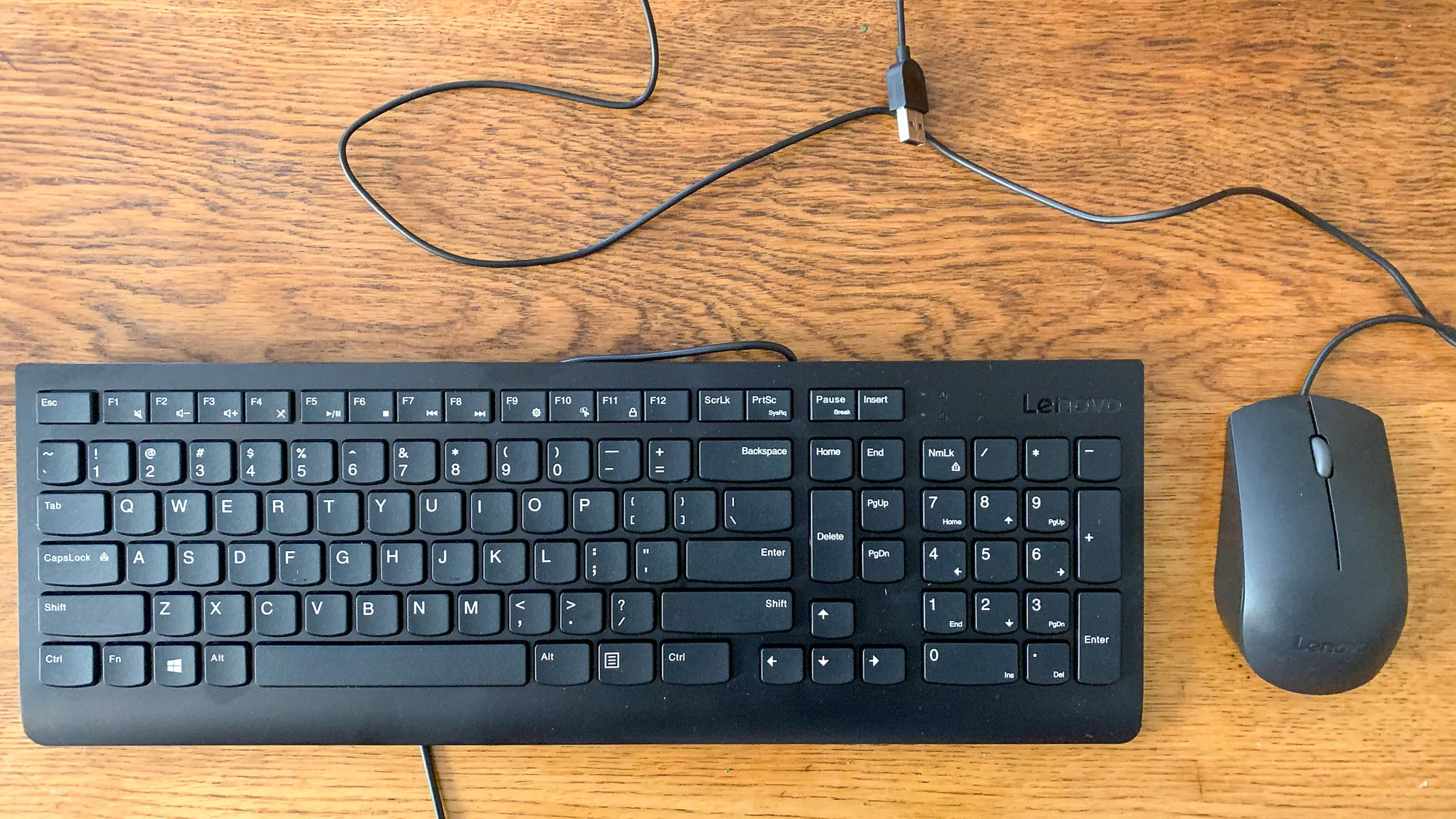
Both peripherals packed in with the Legion Tower 5 felt extremely flimsy compared to my dedicated gaming mouse and mechanical keyboard. It seems a bit silly to complain that a "free" mouse and keyboard don’t match up to more expensive peripherals, but it definitely feels like this was an area where Lenovo skimped a little to keep costs down.
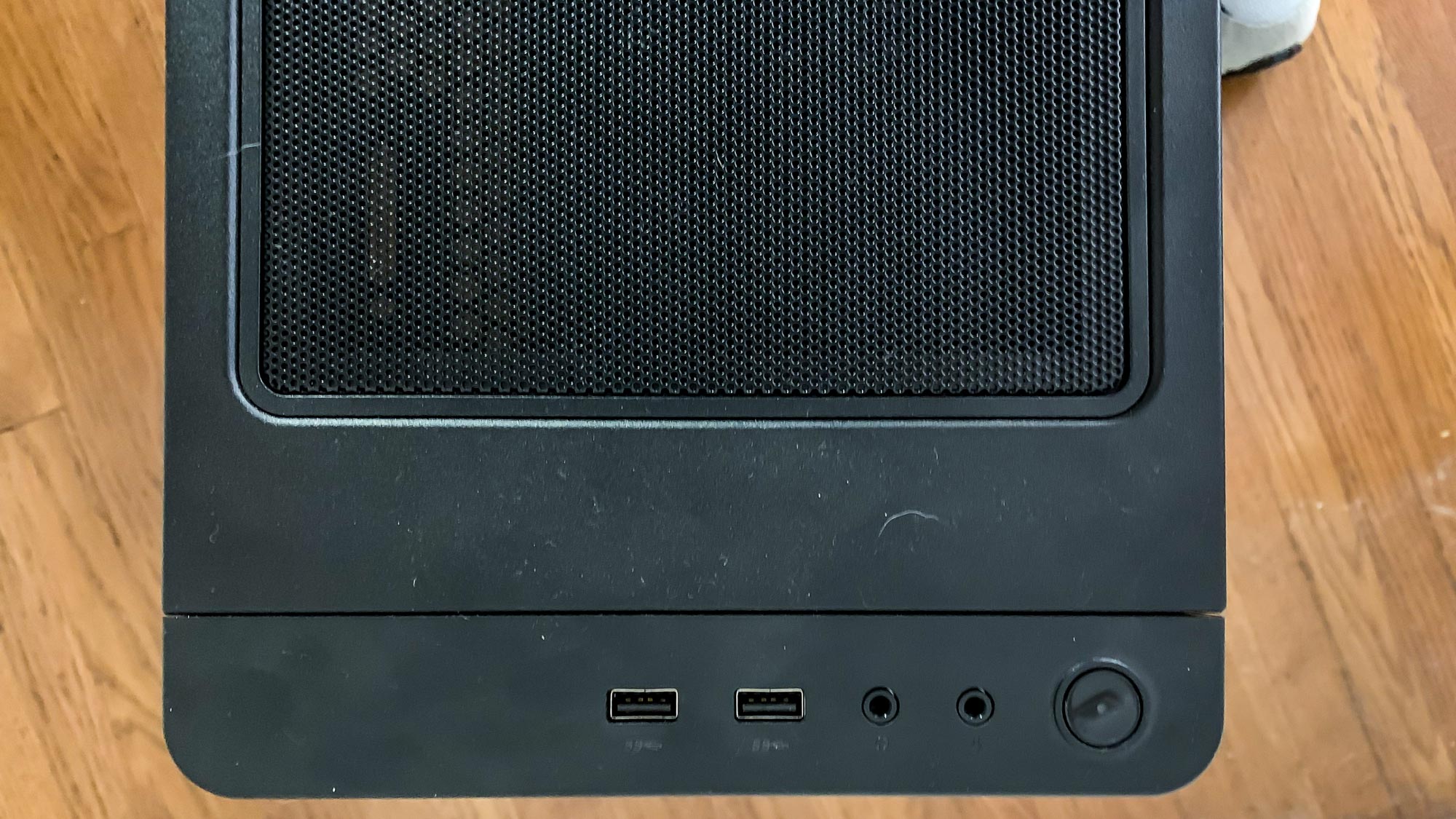
The Legion Tower 5 also comes up a little bit short when it comes to ports. The top of the case has headphone and microphone ports, along with two USB-A 3.2 Gen 1 ports. On the back you'll find an Ethernet port, three audio out ports, and the ports from the graphics card — in this case one HDMI, one DisplayPort, and one DVI port. Besides that there’s a USB-C 3.2 port, two additional USB-A 3.2 Gen 1 ports and two USB-A 2.0 ports, for a total of 7 USB ports.
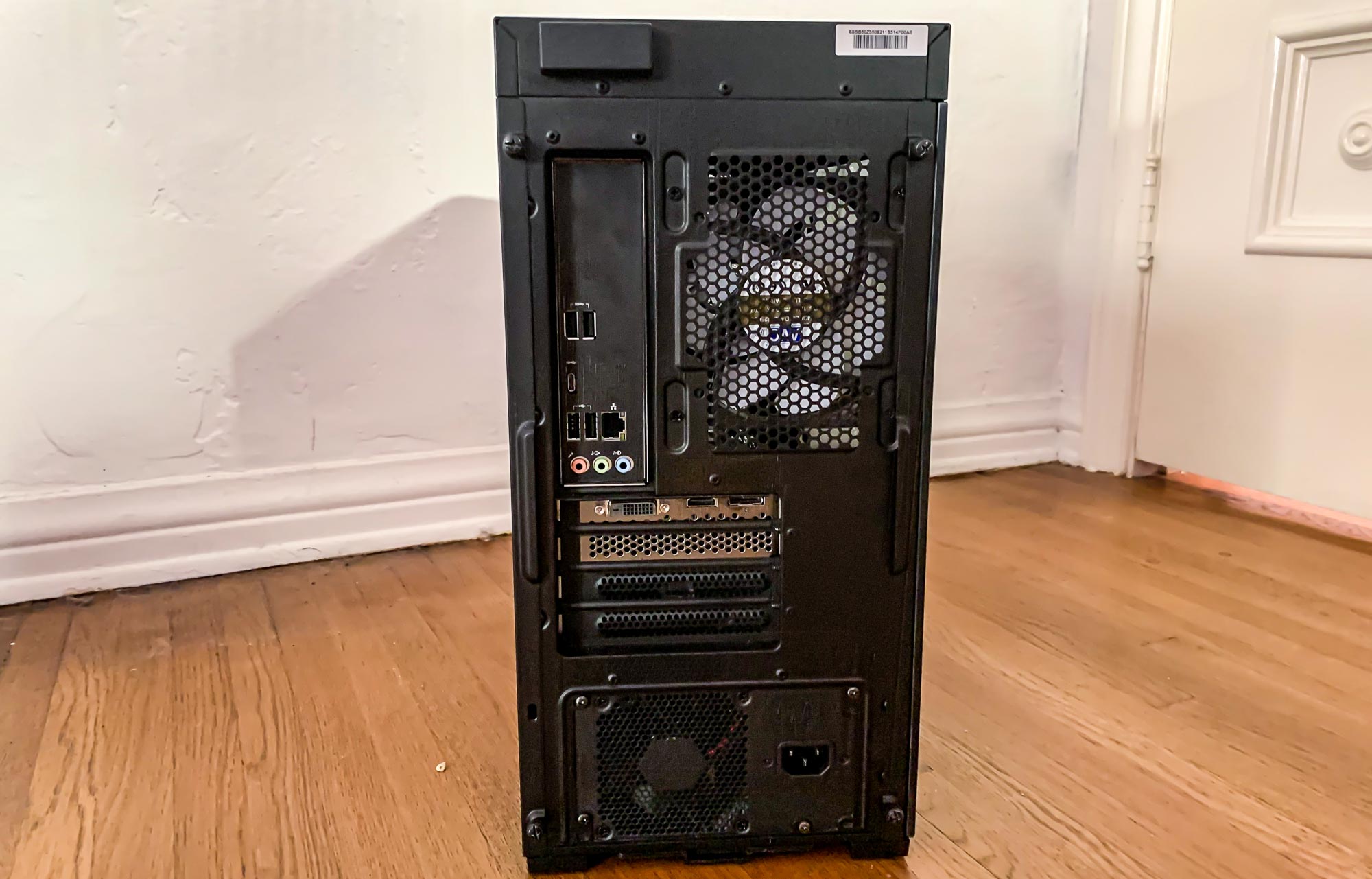
That last detail was actually my biggest problem with the Legion Tower 5 during my testing. Having seven USB ports isn’t exactly stingy, but it’s pretty easy to build or buy a machine at this price with quite a few more. My home machine, for instance, has eight —including two top-facing ports. The similarly priced Dell G5 comes with nine. As a result, the Legion 5 left me regularly plugging and unplugging some of my more rarely used peripherals, until I finally went rooting around for an old USB hub.
On the one hand, a problem that you can solve with a $10 USB hub almost seems like nitpicking. On the other hand, if you’ve got a desktop setup where accessing the back of your machine is a bit of a chore, a few extra ports on the Legion Tower 5 would go a long way.
Lenovo Legion Tower 5 review: Upgradability
- Open, accessible case makes upgrades easy
- Cables tightly routed through the back side can be tricky
The good news is that if you, like me, wish the specs of the Legion 5 were just slightly different, the case makes upgrading almost everything extremely simple.
It’s just a matter of using a Phillips head screwdriver to take two screws off the glass side of the case and you’re inside, where it’s easy to slot in some new RAM or a USB card. There’s plenty of open space here, and almost no cords to get in your way.
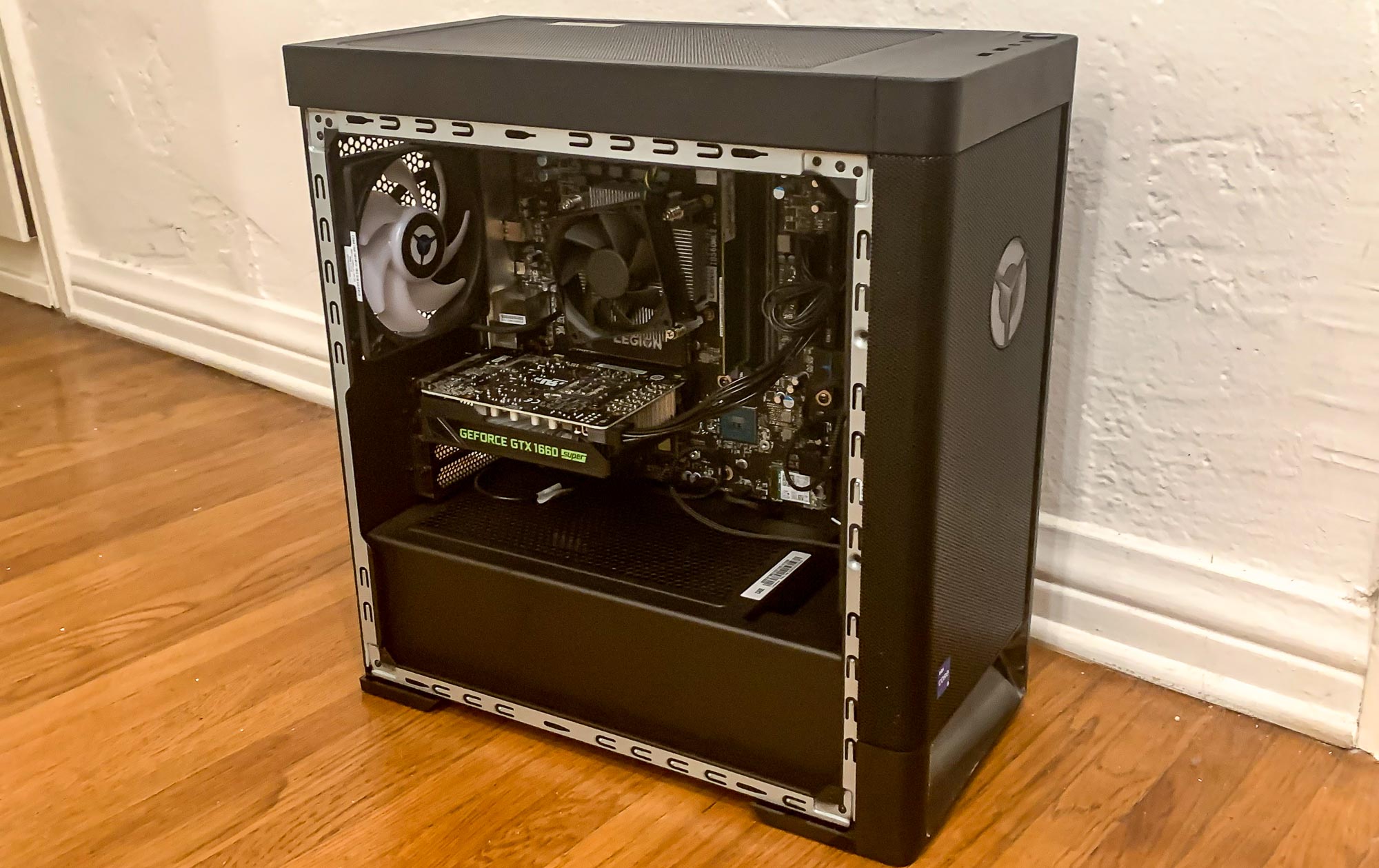
Adding a new hard drive is only slightly more complex. There are open drive bays and SATA cables accessible through the opposite side of the case, but there’s also a lot less space to work with. I have absolutely no room to talk when it comes to cable management, but the nice, clean space visible behind the glass paneling means there are a LOT of cables bundled very tightly and routed through the back side. These can be tricky to work with.
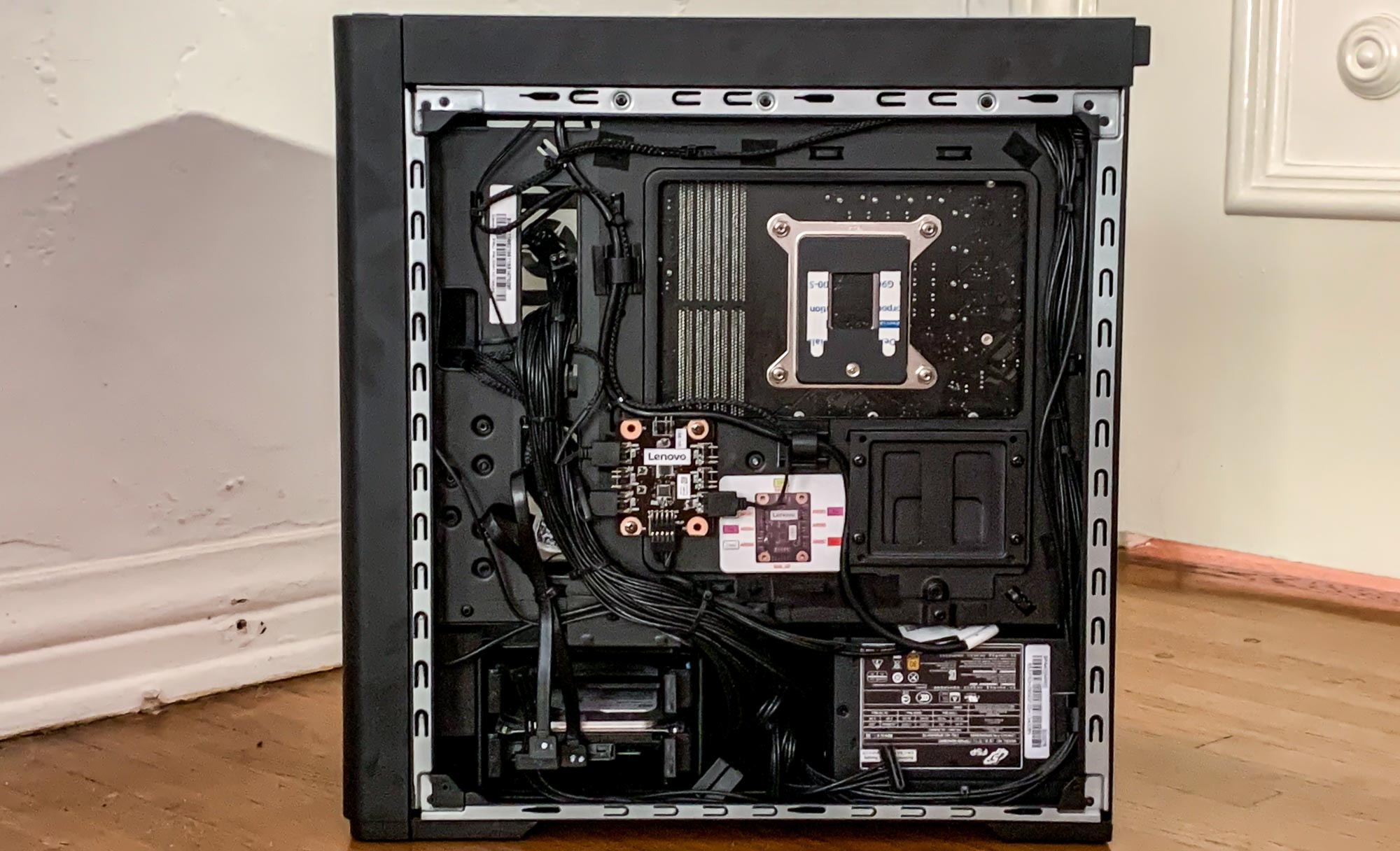
Getting a drive into a drive bay and hooked up would probably require undoing a few of Lenovo’s cable ties just to give yourself a little slack on the SATA and power hookups. Given how little open space there is on this side of the case, that would also probably mean doing a fair bit of cable management once you’re done.
Still, installing a hard drive seems like it would be more of a minor annoyance than an actual problematic upgrade. About the only things that would be at all difficult for owners to upgrade or replace are the motherboard and the processor, and that’s true of basically every desktop on the planet.
Lenovo Legion Tower 5 review: Verdict
The Legion Tower 5 does what it says on the tin. It’ll serve as a decent, though not spectacular, gaming desktop right out of the box. You can solve most of its minor annoyances with quick and relatively inexpensive upgrades.
But if that doesn’t exactly sound like a ringing endorsement, it’s because it isn’t one. There are a lot of solid desktops for this amount of money, many of which have some bells and whistles that the Legion 5 lacks. The Dell XPS 8940, for example, can deliver similar performance for roughly $1,000, and it offers more ports than the Legion Tower 5 in a quiet, nondescript case.
Overall, the Legion Tower 5 didn’t disappoint in testing but it also never wowed me. I was perfectly happy using it as my primary machine for a week or so; I’ll also be perfectly happy to return to my usual machine and send this one back to Lenovo.
David Daw has been writing about tech, games and online culture for over ten years. His byline has appeared at such diverse publications as io9, PCWorld and Gamasutra where he's covered everything from MMO gaming mice to social media-driven revolutions. You can find his contact info as well as more of his writing at David-Daw.com.
-
NiteNite Will this box allow me to set up 3 monitors with the current graphics card? Is the current card integrated or is it in a slot. Is there free slots to put in additional cards?Reply
